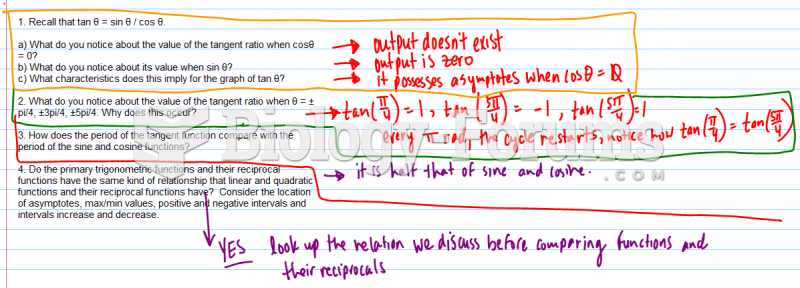Answer to Question 1
The three primary symptoms of ADHD are inattention, hyperactivity (i.e., levels of activity that exceed what is normally shown by children of a given age), and impulsiveness. There are three main types of ADHD, depending on which symptoms are predominant: (1) hyperactive-impulsive, (2) inattentive, and (3) a combination of hyperactive-impulsive and inattentive behavior.
ADHD is most often treated with a combination of psychotherapy and drugs. Some of the drugs currently used to treat ADHD are Ritalin (methylphenidate), Metadate (methylphenidate), and Strattera (atomoxetine). This last drug differs from other drugs used to treat ADHD in that it is not a stimulant. Rather, it affects the neurotransmitter norepinephrine. The stimulants, in contrast, affect the neurotransmitter dopamine. Interestingly, in children, the rate of boys who are given medication for treatment of ADHD is more than double that of girls. In adults, however, the use of ADHD medication is approximately equal for both sexes. A number of studies have noted that, although medication is a useful tool in the treatment of ADHD, it is best used in combination with behavioral interventions.
Answer to Question 2
Spatial neglect is an attentional dysfunction in which individuals ignore the half of their visual field that is contralateral to (on the opposite side of) the hemisphere of the brain that has a lesion. It is a result mainly of unilateral lesions in the parietal and frontal lobes, most often in the right hemisphere. There is no full consensus regarding which part of the brain is responsible for the symptoms of neglect. Recent studies indicate that the posterior superior temporal gyrus, insula, and basal ganglia, as well as the superior longitudinal fasciculus in the parietal lobe are most likely connected with spatial neglect.







